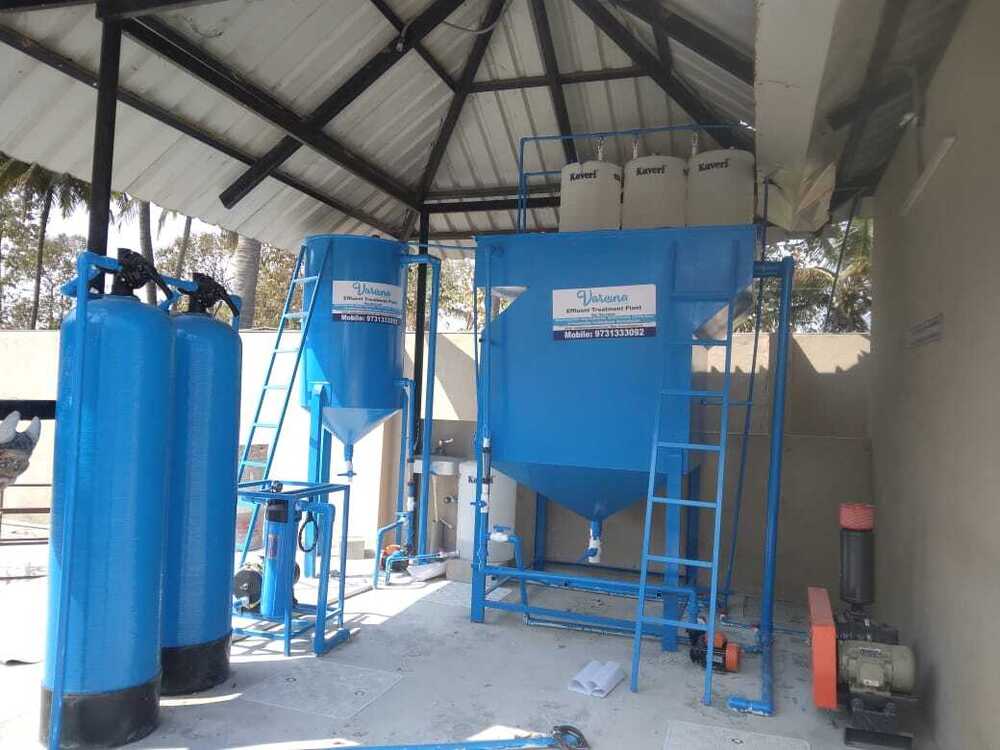About waste water recycling systems
Capacity (KLD/MLD)
100 KLD
Application Industry
Plastic Waste Water Recyling
Inlet Flow Rate(m3/day or m3/hr)
100 m3/day
Treatment Technology
Mixed Bed Bio Reactor(MBBR)
Service Location
Industrial
Type Of Waste
Biodegradable
Frequency
One Time
Water Source
Industrial Effluent
Control Module
Available
Automation Grade
Semi-Automatic
Material Of Construction
Mild Steel
Treatment Stages
Primary Treatment, Secondary Treatment
Warranty
1 Year
Minimum Order Quantity
1 Piece
Reaction tank/ Tube Settler/ activated carbon filter/ Sand media filter vessels/ Skid & Platform with ladder/ Twin lobe air blower/ Effluent transfer pump/ Sludge pump/ Dosing tank/ Dosing pumps/ Holding tank/ tube deck media/ etc...
The effluent treatment plant falls under this category as their common names are effluent treatment system, etp, Effluent wastewater treatment plant, dairy etp, mbr etp plant, effluent treatment plant for textile industry, effluent treatment plant system, Effluent Treatment Plant for Pharmaceutical industry, Rice Mill ETP, Effluent Treatment For Rice Mills
Effluent treatment and wastewater treatment plant are called in this way as their common name wastewater treatment plant, effluent treatment plant, etp plant, industrial effluent treatment plant, sewage treatment plant, pharmaceutical wastewater treatment plant, Wastewater Treatment Plant Effluent, wwtp plant, effluent treatment and wastewater treatment plant, Sewage and effluent treatment plant, wastewater treatment effluent plant, effluent wastewater treatment plant, effluent waste treatment plant, effluent treatment and wastewater treatment, effluent treatment plant and wastewater treatment, industrial effluent wastewater treatment, industrial wastewater effluent treatment, Domestic wastewater treatment plant, commercial wastewater treatment plant
As wastewater enters a plant for treatment it flows through a bar screen. This removes large floating objects such as rags and sticks which could clog pipes or damage equipment. Once the wastewater has been screened it passes into a grit chamber, where cinders, sand and small stones settle to the bottom. Once the screening process is complete and grit has been removed, the wastewater still contains organic and inorganic matter along with other suspended solids. This collection of solids can be removed in a sedimentation tank. Biosolids are usually removed from tanks by pumping If you have the right pH, temperature and flow conditions, activated sludge works well as a treatment process. This process is flexible with varying flow rates and can generally handle shock loads. Activated sludge has been used worldwide for decades and carries a much lower risk of failure than newer technologies. In addition, activated sludge treatment of municipal wastewater is more advanced than any other biological treatment process in the world.
Some of the most common secondary treatment processes are biological processes such as trickling filters, activated sludge and rotating biological contactors. Secondary treatment also removes more of the suspended solids, usually by biological processes in which microbes consume the organic impurities as food and then convert them into carbon dioxide, water and energy. Secondary treatment of sewage works by using aerobic bacteria that feed on dissolved and suspended organic matter in the liquid. The sewage enters the aeration tank where the bacteria begin to multiply and feed on the garbage and waste within. After the sewage leaves the settling tank in the primary stage, it is pumped into an aeration tank. During this time, the bacteria break down the organic matter into harmless byproducts. The sludge is now activated with additional billions of bacteria and other tiny organisms and can be used again by returning it to the aeration tank for mixing with air and new sewage.
FAQs of waste water recycling systems:
Q: What is the drive type of the waste water recycling system?
A: The drive type of the waste water recycling system is Electric.
Q: What is the efficiency percentage of the recycling system?
A: The efficiency of the waste water recycling system is 95%.
Q: What is the capacity of the waste water recycling system?
A: The capacity of the system is 10000 liters (L).
Q: What is the recycle rate of the waste water recycling system?
A: The recycle rate of the system is 85%.
Q: What is the purity level of the recycled water from the system?
A: The purity level of the recycled water is 99%.

